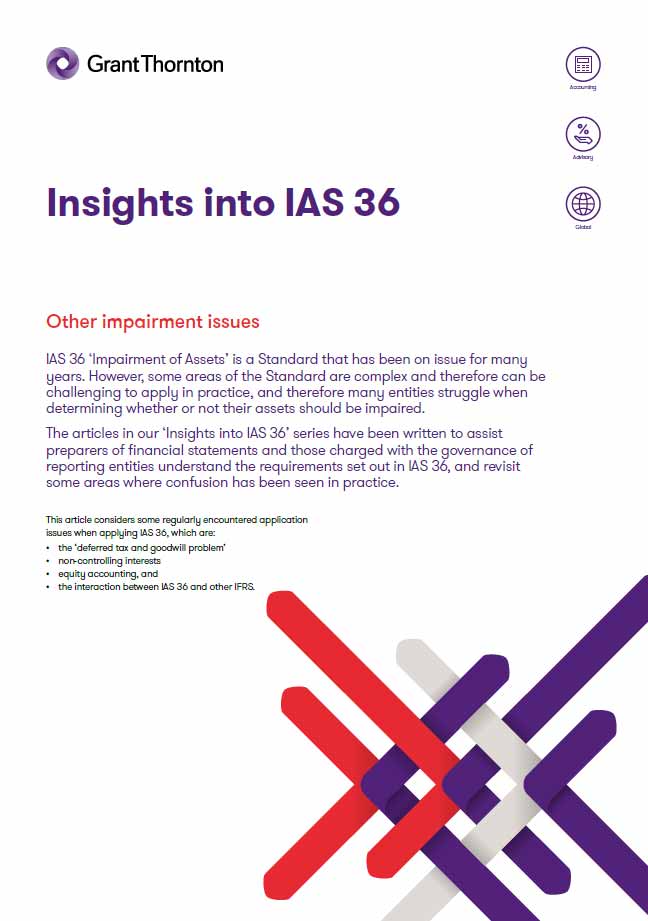-
Accounting Advisory
Our accounting advisory team help businesses meet their complex financial reporting requirements. The team can support in applying new financial reporting standards, IFRS/ US GAAP conversions, financial statement preparation, consolidation and more.
-
Payroll
Our team can handle your payroll processing needs to help you reduce cost and saves time so that you can focus on your core competencies
-
Managed accounting and bookkeeping
Outsourcing the financial reporting function is a growing trend among middle market and startup companies, as it provides a cost-effective way to improve the finance and accounting function. Our team can help with financial statement preparation, consolidation and technical on-call advisory.
-
Accounting Advisory
Our team helps companies keep up with changes to international and domestic financial reporting standards so that they have the right accounting policies and operating models to prevent unexpected surprises.
-
Crypto Accounting Advisory Service
Our team can help you explore appropriate accounting treatment for accounting for holdings in cryptocurrencies, issuance of cryptocurrencies and other crypto/blockchain related accounting issues.
-
ESG Reporting and Accounting
As part of our ESG and Sustainability Services, our team will work with you on various aspects of ESG accounting and ESG reporting so that your business can be pursue a sustainable future.
-
Expected Credit Loss
Our team of ECL modelling specialists combine help clients implement provisioning methodology and processes which are right for them.
-
Finance Transformation
Our Finance Transformation services are designed to challenge the status quo and enable your finance team to play a more strategic role in the organisation.
-
Managed Accounting and Bookkeeping Services
Outsourcing the financial reporting function is a growing trend among middle market and startup companies, as it provides a cost-effective way to improve the finance and accounting function. Our team can help with financial statement preparation, consolidation and technical on-call advisory.
-
Business Tax Advisory
Our business tax team can help you navigate the international tax landscape, grow through mergers and acquisitions, or plan an exit strategy.
-
Corporate Finance
Our corporate finance team helps companies with capital raising, mergers and acquisitions, private equity, strategic joint ventures, special situations and more.
-
Financial Due Diligence
From exploring the strategic options available to businesses and shareholders through to advising and project managing the chosen solution, our team provide a truly integrated offering
-
Valuations
Our valuation specialists blend technical expertise with a pragmatic outlook to deliver support in financial reporting, transactions, restructuring, and disputes.

-
Sustainability with the ARC framework
Backed by the CTC Grant, businesses can tap on the ARC Framework to gain access to sustainability internally, transform business processes, redefine job roles for workers, and enhance productivity. Companies can leverage this grant to drive workforce and enterprise transformation.

-
Business Tax Advisory
Our business tax team can help you navigate the international tax landscape, grow through mergers and acquisitions, or plan an exit strategy.
-
Corporate Tax Compliance
Our corporate tax teams prepare corporate tax files and ruling requests, support you with deferrals, accounting procedures and realise tax benefits.
-
Tax Governance
Our Tax Governance Services are designed to assist organisations in establishing effective tax governance practices, enabling them to navigate the intricate tax environment with confidence.
-
Goods and Services Tax
Our GST team supports organisations throughout the entire business life-cycle. We can help with GST registration, compliance, risk management, scheme renewals, transaction advisory and more.
-
Transfer Pricing
Our Transfer Pricing team advises clients on their transfer pricing matters on and end-to-end basis right from the designing of policies, to assistance with annual compliance and assistance with defense against the claims of competing tax authorities.
-
Employer Solutions
Our Employer Solutions team helps businesses remain compliant in Singapore as well as globally as a result of their employees' movements. From running local payroll, to implementing a global equity reward scheme or even advising on the structure of employees’ cross-border travel.
-
Private Client Services
Our private client services team provides a comprehensive cross section of advisory services to high net worth individuals and corporate executives, allowing such individuals to concentrate on their business interests.
-
Welfare and benefits
We believe that a thriving team is one where each individual feels valued, fulfilled, and empowered to achieve their best. Our welfare and benefits aim to care for your wellbeing both professionally and personally.
-
Career development
We want to help our people learn and grow in the right direction. We seek to provide each individual with the right opportunities and support to enable them to achieve their best.
This article considers some regularly encountered application issues when applying IAS 36.
In this article
The articles in our ‘Insights into IAS 36’ series have been written to assist preparers of financial statements and those charged with the governance of reporting entities understand the requirements set out in IAS 36, and revisit some areas where confusion has been seen in practice.
Deferred tax and goodwill problem
This refers to a well-known application issue that sometimes arises in testing goodwill for impairment. In some business combinations, goodwill arises mainly or solely as a consequence of deferred tax liabilities (DTLs). DTLs are recognised (and increase goodwill) when the acquisition date fair value of identifiable assets exceeds their tax base. The effect of deferred tax on goodwill is relevant to most business combinations but can be particularly significant for acquisitions involving:
- properties acquired in a corporate shell for which the tax base is driven by the historical amount paid by the shell entity, and
- intangible assets that are recorded at fair value by the acquirer but were not recognised by the acquired entity (and therefore have a tax base of zero).
In our view, this deferred tax-related goodwill is an accounting phenomenon that does not represent real benefits that the acquirer has paid for and that may increase future cash flows. When this goodwill is tested for impairment (having been allocated to CGUs) using the normal IAS 36 approach, as illustrated in the example above, it may be immediately impaired (also referred to as a ‘day 1’ impairment).
IAS 36 requires the carrying value of a CGU to be calculated in a manner consistent with the determination of VIU. Hence, tax balances should generally be excluded from CGUs for impairment testing. However, recognising a day 1 impairment loss is also counter-intuitive and is viewed by some as an unintended consequence of the various requirements in IFRS 3, IAS 12 and IAS 36. For this reason, many commenters believe that it is appropriate to use a practical expedient to avoid a day 1 impairment when it is due solely to DTLs increasing goodwill in a business combination. However, views differ on how to achieve this.
Non-controlling interests
Non-controlling interests (NCI) are equity instruments of the acquiree not held directly or indirectly by the acquirer and arise when a parent holds less than 100% of the equity of a subsidiary. IFRS 3 includes an accounting policy option to initially measure NCI at either:
- fair value, or
- the proportionate interest in the acquiree’s recognised identifiable net assets.
When the fair value model is used, 100% of the goodwill in the acquiree is effectively recognised (both the acquirer’s and the NCI’s share) in the statement of financial position. This is sometimes described as the ‘full goodwill’ method. In this case, when the entity performs its impairment review, there is no ‘mismatch’. This is because VIU and FVLCOD are estimated based on 100% of the asset or CGU under review and its related cash flows. Said differently, the entity will be comparing ‘like with like’.
In practice however, an acquirer more often measures NCI at the proportionate interest in the acquiree’s recognised identifiable net assets. In this case, only the acquirer’s interest in the goodwill is recognised (‘partial goodwill’ method). Therefore, without an adjustment, the carrying value of the CGU is understated because recoverable amount is based on 100% of the cash flows but the carrying value does not include all the goodwill that contributes to those cash flows). Put another way, the entity will not be comparing ‘like with like’.
In this situation, an adjustment is required to address the mismatch. The carrying amount of goodwill allocated to the unit must be grossed-up to include the goodwill attributable to the NCI. This involves:
- adding goodwill attributable to the NCI to the CGU, and
- comparing the adjusted carrying amount of the CGU to its recoverable amount.
If an impairment loss then arises, this must be allocated between the amount relating to the parent’s recognised goodwill and the NCI share. Only the impairment loss relating to the goodwill that is allocated to the parent is recognised as a goodwill impairment loss.
IAS 36 and equity accounting
The requirements of IAS 36 apply to subsidiaries, associates and joint ventures accounted for under the cost method in the parent’s separate financial statements and to investments accounted for using the equity method in accordance with IAS 28 ‘Investments in Associates and Joint Ventures’. The impairment review for an investment in an associate or a joint venture involves two steps:
- Applying the equity method to recognise the investor’s share of any impairment losses from the associate’s or joint venture’s identifiable assets.
- Reviewing the investment in the associate or joint venture as a whole for impairment and recognising any impairment loss.
Interaction between IAS 36 and other IFRS Standards
IAS 36 and IAS 34 ‘Interim Financial Reporting’
IAS 36 calls for an assessment ‘at the end of each reporting period’ for any indication that an asset may be impaired. For entities that prepare half-yearly or quarterly financial statements in accordance with IAS 34, the assessment will be more frequent than for entities that prepare only annual financial statements, subject to the ‘reliefs’ highlighted in our article ‘Insights into IAS 36 – Comparing recoverable amount with carrying amount’.
IAS 34 requires an entity to apply the same accounting policies in its interim financial statements as are applied in its annual financial statements.
IAS 34 also states the frequency of an entity’s reporting (annual, half-yearly, or quarterly) should not affect the measurement of its annual results. However, the frequency of reporting can in fact affect annual results when an entity recognises an impairment loss on goodwill in an interim period. This loss cannot be reversed even if conditions change at the end of the annual period and indicate that the impairment loss would have been reduced or avoided (had the entity only reported annually).
IFRIC 10 ‘Interim Financial Reporting and Impairment’ effectively confirms that the prohibition on reversing goodwill impairment in IAS 36 overrides the statement in IAS 34.
IAS 36 and IAS 10 ‘Events after the Reporting Period’
IAS 10 provides guidance on whether an entity should adjust its financial statements for events that occur after the reporting period and prescribes related disclosures. In summary, adjustments are made for events that provide evidence of conditions that existed at the end of the reporting period while no adjustments are made for events that are indicative of conditions that arose after the end of the reporting period. An event such as physical damage arising after the reporting period would clearly be nonadjusting.
The impact of evidence that becomes available after the reporting period about adverse changes in economic performance or the external environment may require more detailed evaluation. Judgement may be required to decide whether the underlying adverse condition existed at the period-end.
If an entity concludes that an event after period-end is indicative of conditions that arose after the reporting period (ie a nonadjusting event), disclosure in accordance with IAS 10 may still be necessary.
IAS 36 and IFRS 5 ‘Non-current Assets Held for Sale and Discontinued Operations’
Once an asset meets the criteria to be classified as held for sale (or is included in a disposal group that is classified as held for sale), it is excluded from the scope of IAS 36 and included within the scope of IFRS 5. However, immediately prior to reclassification to IFRS 5, any impairment is recognised in accordance with the provisions outlined in IAS 36.
IAS 36 and IAS 37 ‘Provisions, Contingent Liabilities and Contingent Assets’
The interaction between IAS 36 and IAS 37 in relation to restructuring plans and VIU is explained in ‘Insights into IAS 36 – Value in use: estimating future cash inflows and outflows’.
Another interaction arises in relation to onerous contracts. IAS 37 requires that an entity recognises any impairment loss that has occurred on assets dedicated to completion of a contract before recognising an onerous contract provision. For example, a lessee in an operating lease of property that might have become onerous would test any leasehold improvements for impairment before
recognising and measuring a provision for the onerous lease.



